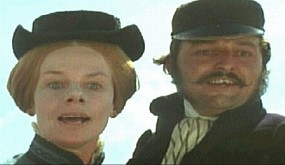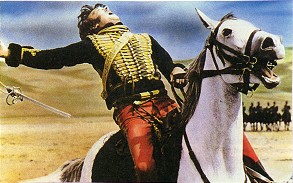|
|

|
|
|
|
|
|

|
|
|
|
Scenes which clearly owe more to the notorious Elspeth Flashman... ;-D |
|
|
|
|
|
- That might explain a lot! |

There were some dramatised scenes, which didn't really add a great deal, though I noted with relief that, unlike in some drama-docs, they had cast actors who resembled their characters. Russell Levy was a refreshingly unglamourised Louis (an improvement on David Hemmings à la Lermontov), with the imperious, somewhat sour expression of the portraits. Indeed, from some angles it was like seeing the 1845 equestrian portrait, with the necessary added decade, come to life... and I certainly don't object to that! <vbeg> He didn't have the waxed moustache shown in the watercolour portrait and the Alken illustrations for The Training of Cavalry Remount Horses, but then we don't know if Louis still had it in the Crimea (it would have been a bit high-maintenance). As per the 1968 film, the gruesome chest wounds weren't depicted: some realities of war don't make for evening family viewing, even after the 9 p.m. watershed. But my h/c complex kicked in again... |
|

Komm her ins Kerzenlicht. Ich bin nicht bang,
die Toten anzuschauen.Rainer Maria Rilke, Requiem for a Friend